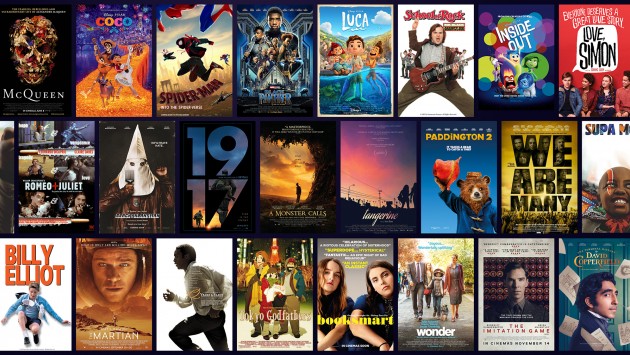Unpacking The Film Man On Fire True Story: Is Denzel's Revenge Tale Real?
The question of whether a compelling film is based on a true story often captures our thoughts. It's a natural thing, really, to wonder if the intense feelings and dramatic events we see on screen actually happened. For many who have watched "Man on Fire," a film that, you know, truly leaves a mark, this very question comes up a lot. We see Denzel Washington's character, Creasy, and his deep connection with the young girl, Pita, and then, that, her abduction. It makes you ask, could something like this actually be real?
This particular film, a rather strong piece of cinema, has a way of staying with you, long after the credits roll. The performances, the setting, and the raw emotion really hit home. It makes sense, too, that people would want to connect its narrative to something tangible, something from our world. That curiosity about the film man on fire true story is very common, a sign of how much the movie resonates.
So, we're going to look closely at this film's origins, exploring what might make people think it's a true story and what the actual facts are. We will consider the world it portrays, the book that inspired it, and why this kind of question matters so much to us as viewers. It's a way, perhaps, of understanding the film's lasting impact, you know, on our collective imagination.
Table of Contents
- The Enduring Appeal of "Man on Fire"
- The Novel Behind the Film: A Fictional Foundation
- The Harsh Reality of Kidnapping in Mexico City
- Denzel Washington's Portrayal: A Deep Dive
- Why We Ask: The "True Story" Allure
- Connecting with the Film's Emotion
- FAQs About "Man on Fire"
The Enduring Appeal of "Man on Fire"
The film "Man on Fire," released in 2004, truly captured audiences with its intense narrative and strong performances. It's a story that explores themes of protection, loss, and a quest for justice, which, you know, are very universal feelings. Denzel Washington, as John Creasy, a former CIA operative turned bodyguard, shows a remarkable transformation from a weary, broken spirit to a man driven by a fierce sense of purpose. This journey, honestly, is one of the main reasons the film holds such a grip on viewers.
The visual style of the film, directed by Tony Scott, also plays a big part in its impact. It uses quick cuts and a somewhat gritty look that, in a way, puts you right into the chaotic world of Mexico City. This approach, you know, makes the events feel immediate and very real, even if the plot itself is a work of fiction. It's a testament to how cinematic choices can shape our perception of a story.
People often talk about the film's emotional depth. The bond that grows between Creasy and Pita, the young girl he protects, is really the heart of the story. Her innocence and his quiet dedication create a powerful contrast to the violent world around them. This connection, you know, is what makes Creasy's later actions so understandable, so, in a way, justified, from a character standpoint.
The Novel Behind the Film: A Fictional Foundation
When people ask about the film man on fire true story, the most direct answer lies in its origins. The movie is, in fact, an adaptation of a novel by the same name. This book, written by A.J. Quinnell, was first published in 1980. Quinnell, whose real name was Philip Nicholson, was an English author who lived in Gozo, Malta, and, you know, became known for his thrillers.
The novel "Man on Fire" was the first in a series featuring the character of Creasy. Quinnell wrote several more books about him, expanding on his past and future adventures. So, to be clear, the story of Creasy and Pita is a product of Quinnell's imagination. It's a work of fiction, created for entertainment, though it certainly draws on some very real-world anxieties.
It's interesting, too, how films often refer to a specific piece of work, like a book. The word "film" itself can suggest a more serious or artistic piece of cinema, as my text points out, differentiating it from a more general "movie." In this case, the film adaptation took the essence of Quinnell's novel and, you know, brought it to a wider audience, adding its own visual flair and emotional weight.
The Harsh Reality of Kidnapping in Mexico City
While the specific events of "Man on Fire" are fictional, the film's setting and the prevalence of kidnapping depicted in it were, sadly, a reflection of a very real problem in Mexico City during the time the film was made and even before. In the late 1990s and early 2000s, Mexico faced a significant challenge with organized crime, and kidnappings, especially of wealthy individuals or their family members, were, you know, a disturbing reality.
This context gives the film a certain grittiness and, in a way, a sense of urgency that might make viewers feel it has a factual basis. The fear and helplessness of families dealing with abduction were very much present in the city's atmosphere. So, while Creasy and Pita's story isn't true, the environment they exist in, the danger they face, was, unfortunately, a daily concern for many people living there.
The filmmakers, you know, did a pretty good job of capturing this unsettling reality. They aimed to show the tension and fear that permeated society due to these crimes. This attention to the social backdrop helps to explain why so many people wonder about the film man on fire true story; it feels authentic because it taps into genuine societal issues, which, basically, gives it a kind of truth, even if the plot is made up.
Denzel Washington's Portrayal: A Deep Dive
Denzel Washington's performance as Creasy is, arguably, one of the most compelling aspects of "Man on Fire." He brings a quiet intensity to the character, showing a man who is deeply troubled by his past but finds a new reason to live through his connection with Pita. His portrayal captures the essence of a protector, someone who, you know, will go to extreme lengths for those he cares about.
The way Washington embodies Creasy's transformation, from a person who seems to have given up on life to a relentless force seeking retribution, is quite remarkable. He conveys so much with just a look or a subtle gesture, which, honestly, makes the character feel incredibly real and complex. This depth, you know, makes viewers connect with Creasy's journey on a very personal level.
His acting adds a layer of believability to the otherwise fictional narrative. When you see him on screen, you tend to forget that it's a made-up story because his performance is so convincing. It's a prime example of how a skilled actor can elevate a film, making the emotional stakes feel incredibly high, which, basically, contributes to the overall impact of the film and why people might search for the film man on fire true story.
Why We Ask: The "True Story" Allure
There's a natural human inclination to seek out the "true story" behind powerful narratives, especially films that stir strong feelings. When a movie, like "Man on Fire," presents such a raw and emotional portrayal of events, our minds, you know, often try to anchor it in reality. We want to believe that the heroism, the tragedy, or the profound human connection we witness actually happened, as a matter of fact.
This desire stems from a few places. For one, if a story is true, it often feels more significant, more impactful. It gives the events a weight that fiction, for some, might lack. It also allows us to connect with the characters on a deeper level, knowing that their struggles or triumphs were, you know, genuinely experienced by someone. This makes the lessons or the emotions of the film feel more authentic, more immediate.
Also, stories based on real events often offer a sense of learning or understanding about the world. They can shed light on historical periods, social issues, or the human condition in a way that feels very tangible. So, when people search for the film man on fire true story, they're not just looking for a factual confirmation; they're often looking for a deeper connection to the film's themes and its portrayal of a harsh reality, you know, that existed.
Connecting with the Film's Emotion
Regardless of its fictional status, "Man on Fire" continues to resonate with audiences because it taps into very primal human emotions. The themes of protection, revenge, and the bond between a guardian and a child are, honestly, timeless. We see Creasy's fierce dedication to Pita, and that, you know, speaks to our own protective instincts and our desire for justice when someone we care about is harmed.
The film's intensity, its portrayal of a man pushed to his limits, also makes it a powerful experience. It shows the dark side of humanity but also the incredible strength of spirit and loyalty. This exploration of complex emotions, you know, is what makes the film memorable, far beyond just its plot points. It's a story that, basically, makes you feel a lot of things, very deeply.
Even if it's not a true story, the film serves as a mirror, reflecting our own fears about vulnerability and our hopes for redemption. It shows how, in the face of great darkness, a single person can, you know, make a stand. This emotional connection is, perhaps, the most important "truth" the film offers, making it a compelling watch for many years after its release. Learn more about on our site, and link to this page for more insights.
FAQs About "Man on Fire"
Is the "Man on Fire" book a true story?
No, the book "Man on Fire" by A.J. Quinnell is a work of fiction. Quinnell, whose actual name was Philip Nicholson, created the character of Creasy and the story of Pita's abduction. It's the first in a series of thrillers he wrote, so, you know, it's all from his imagination.
What inspired the author of "Man on Fire"?
While the story itself is fictional, the author, A.J. Quinnell, was reportedly inspired by the actual increase in kidnappings that occurred in Italy during the 1970s. He later moved the setting of his stories to Mexico, reflecting a similar rise in such crimes there, which, you know, gave the narrative a very current feel at the time. You can learn more about the author and his works on various literary sites, for instance, a good starting point might be Goodreads.
Where was "Man on Fire" filmed, and why Mexico City?
The film "Man on Fire" was primarily shot on location in Mexico City, Mexico. The director, Tony Scott, chose Mexico City because of the alarming rate of kidnappings happening there at the time, particularly in the early 2000s. This setting, you know, lent a sense of realism and urgency to the film, making the fictional story feel more grounded in a tangible, dangerous reality, which, honestly, added to its dramatic impact.

New Movies 2024 Thriller - Katie Meaghan

New Poster for Babylon (2022) Movie - Story: A tale of outsized

Films - Into Film